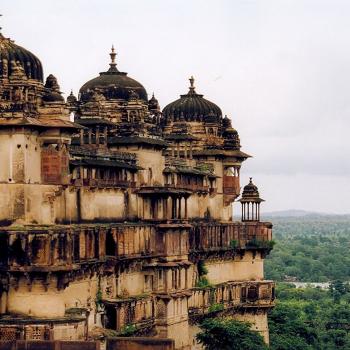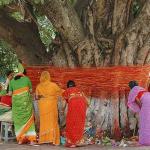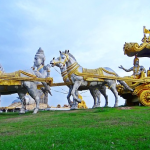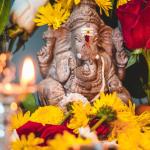An ascetic or householder who has observed all these vows to shed the karmas, takes the vow of Sallekhana at the end of his life. According to the Jain text, Purushartha Siddhyupaya, “sallekhana enable a householder to carry with him his wealth of piety”. Sallekhana is treated as a supplementary to the twelve vows taken by Jains. However, some Jain Acharyas such as Acharya Kundakunda, Devasena, Padmanandin and Vasunandin have included it under the last vow, śikşā-vrata. According to Tattvartha Sutra (a compendium of Jain principles):”A householder willingly or voluntary adopts Sallekhana when death is very near.”
According to Champat Rai Jain: “The true idea of Sallekhanā is only this that when death does appear at last, one should know how to die, that is, one should die like a monk, not like a beast, bellowing and panting and making vain efforts to avoid, the unavoidable.”
In around 300 BC, Chandragupta Maurya (founder of the Maurya Empire) undertook Sallekhana atop Chandragiri Hill, Śravaṇa Beḷgoḷa, Karnataka. Acharya Shantisagar, a highly revered Digambara Jain saint of the modern India took Sallekana on 18 August 1955. He decided to take the vow in July 1955, on account of inability to walk without help and weak eye-sight. He died on 18 September 1955.
Sallekhana is often compared with suicide. According to Purushartha Siddhyupaya, when death is near, the vow of sallekhanā is observed by properly thinning the body and the passions. It also mentions that, sallekhanā is not suicide since the person observing it, is devoid of all passions like attachment. The vow of sallekhanā is often explained with a famous example: A trader stores commodities for sale and stores them. He does not welcome the destruction of his storehouse. The destruction of the storehouse is against his wish. And, when some danger threatens the storehouse, he tries to safeguard it. But if he cannot stop the danger, he tries to save the commodities at least from ruin.
Similarly, a householder is engaged in acquiring the commodity of vows and supplementary vows. And he does not desire the ruin of the receptacle of these virtues, namely the body. But when serious danger threatens the body, he tries to avert it in a righteous manner without violating his vows. In case it is not possible to avert danger to the body, he tries to safeguard his vows at least.} Jainism forbids suicide and it is said to be the biggest sin. Suicide involves an intentional act of harm against oneself with a known outcome that negatively affects those left behind. It is believed that the precipitous taking of one’s life constitutes only a perpetuation of the karma from the current life (particularly that associated with negativity or suffering), which is thus “inherited” by the subsequent life to be assumed through reincarnation. Suicide does not allow escape from one’s karma, nor from one’s cycle of births and rebirths. However, in the practise of Sallekhana, it is viewed that death is “welcomed” through a peaceful, tranquil process that provides peace of mind and sufficient closure for the adherent, their family and/or community.















